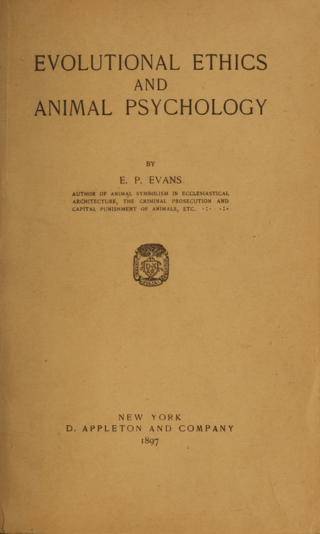
Property is a system of rights that gives people legal control of valuable things, and also refers to the valuable things themselves. Depending on the nature of the property, an owner of property may have the right to consume, alter, share, redefine, rent, mortgage, pawn, sell, exchange, transfer, give away, or destroy it, or to exclude others from doing these things, as well as to perhaps abandon it; whereas regardless of the nature of the property, the owner thereof has the right to properly use it under the granted property rights.
Corporate personhood or juridical personality is the legal notion that a juridical person such as a corporation, separately from its associated human beings, has at least some of the legal rights and responsibilities enjoyed by natural persons. In most countries, a corporation has the same rights as a natural person to hold property, enter into contracts, and to sue or be sued.
The right of self-defense is the right for people to use reasonable or defensive force, for the purpose of defending one's own life (self-defense) or the lives of others, including, in certain circumstances, the use of deadly force.

Friedrich Carl von Savigny was a German jurist and historian.
In law, a legal person is any person or 'thing' that can do the things a human person is usually able to do in law – such as enter into contracts, sue and be sued, own property, and so on. The reason for the term "legal person" is that some legal persons are not people: companies and corporations are "persons" legally speaking, but they are not people in a literal sense.
A person is a being who has certain capacities or attributes such as reason, morality, consciousness or self-consciousness, and being a part of a culturally established form of social relations such as kinship, ownership of property, or legal responsibility. The defining features of personhood and, consequently, what makes a person count as a person, differ widely among cultures and contexts.
Public law is the part of law that governs relations and affairs between legal persons and a government, between different institutions within a state, between different branches of governments, as well as relationships between persons that are of direct concern to society. Public law comprises constitutional law, administrative law, tax law and criminal law, as well as all procedural law. Laws concerning relationships between individuals belong to private law.

Self-ownership is the concept of property in one's own body, expressed as the moral or natural right of a person to have bodily integrity meaning the exclusive right to control one's own body including one's life, where 'control' means exerting any physical interference and 'exclusive' means having the right to install and enforce a ban on other people doing this. Since the legal norm of property title claim incapacitates other people from claiming property title over the same resource at the same time, the right to control or interfere with one's own body in any arbitrary way is secured. Anarcho-capitalism defines self-ownership as the exclusive right to control one's body as long as the owner does not aggress upon others, leading to the concept of the sovereign individual. Minarchism considers self-ownership to mean the exclusive right to control one's body insofar considering action between inhabitants and not involving the state, making it roughly a pacifist morality only among inhabitants. Self-ownership is a central idea in several political philosophies that emphasize individualism, such as libertarianism and liberalism.
Wesley Newcomb Hohfeld was an American jurist. He was the author of the seminal Fundamental Legal Conceptions as Applied in Judicial Reasoning and Other Legal Essays (1919).
Correlative is the term adopted by Wesley Newcomb Hohfeld to describe the philosophical relationships between fundamental legal concepts in jurisprudence.
Tortious interference, also known as intentional interference with contractual relations, in the common law of torts, occurs when one person intentionally damages someone else's contractual or business relationships with a third party, causing economic harm. As an example, someone could use blackmail to induce a contractor into breaking a contract; they could threaten a supplier to prevent them from supplying goods or services to another party; or they could obstruct someone's ability to honor a contract with a client by deliberately refusing to deliver necessary goods.
Commodity form theory is a theory of jurisprudence advanced by the Soviet legal theorist Evgeny Pashukanis. The theory argues that the legal form is the parallel of the commodity form under capitalist society.
The law of Germany, that being the modern German legal system, is a system of civil law which is founded on the principles laid out by the Basic Law for the Federal Republic of Germany, though many of the most important laws, for example most regulations of the civil code were developed prior to the 1949 constitution. It is composed of public law, which regulates the relations between a citizen/person and the state or two bodies of the state, and the private law, (Privatrecht) which regulates the relations between two people or companies. It has been subject to a wide array of influences from Roman law, such as the Corpus Juris Civilis, to Napoleonic law, such as the Napoleonic Code.
A juridical person is a human legal person that is not a single natural person but an organization recognized by law as a fictitious person such as a corporation, government agency, non-governmental organisation, or international organization. Other terms include artificial person, corporate person, judicial person, juridical entity, juridic person, or juristic person. A juridical person maintains certain duties and rights as enumerated under relevant laws. The rights and responsibilities of a juridical person are distinct from those of the natural persons constituting it.
Some philosophers and political scientists make a distinction between claim rights and liberty rights. A claim right is a right which entails responsibilities, duties, or obligations on other parties regarding the right-holder. In contrast, a liberty right is a right which does not entail obligations on other parties, but rather only freedom or permission for the right-holder. The distinction between these two senses of "rights" originates in American jurist Wesley Newcomb Hohfeld's analysis thereof in his seminal work Fundamental Legal Conceptions, As Applied in Judicial Reasoning and Other Legal Essays (1919).

Evgeny Bronislavovich Pashukanis was a Soviet legal scholar, best known for his work The General Theory of Law and Marxism.

Murphy v Brentwood District Council[1991] UKHL 2, [1991] 1 AC 398 was a judicial decision of the House of Lords in relation to recovery for pure economic loss in tort.
Personhood is the status of being a person. Defining personhood is a controversial topic in philosophy and law and is closely tied with legal and political concepts of citizenship, equality, and liberty. According to law, only a legal person has rights, protections, privileges, responsibilities, and legal liability.
Legal evolution is a branch of legal theory which proposes that law and legal systems change and develop according to regular, natural laws. It is closely related to social evolution and was developed in the 18th century, peaking in popularity in the 19th century before entering a prolonged hiatus. Legal evolution saw a revival at the end of the 20th century and is continued in multiple contemporary theories. Theories of legal evolution use a variety of methodologies, including elements of sociological, historical, philosophical approaches.

Evolutional Ethics and Animal Psychology is an 1897 book by the American scholar and early animal rights advocate Edward Payson Evans, which argues for the use of animal psychology as the basis for animal rights in the historical evolution of ethics.





